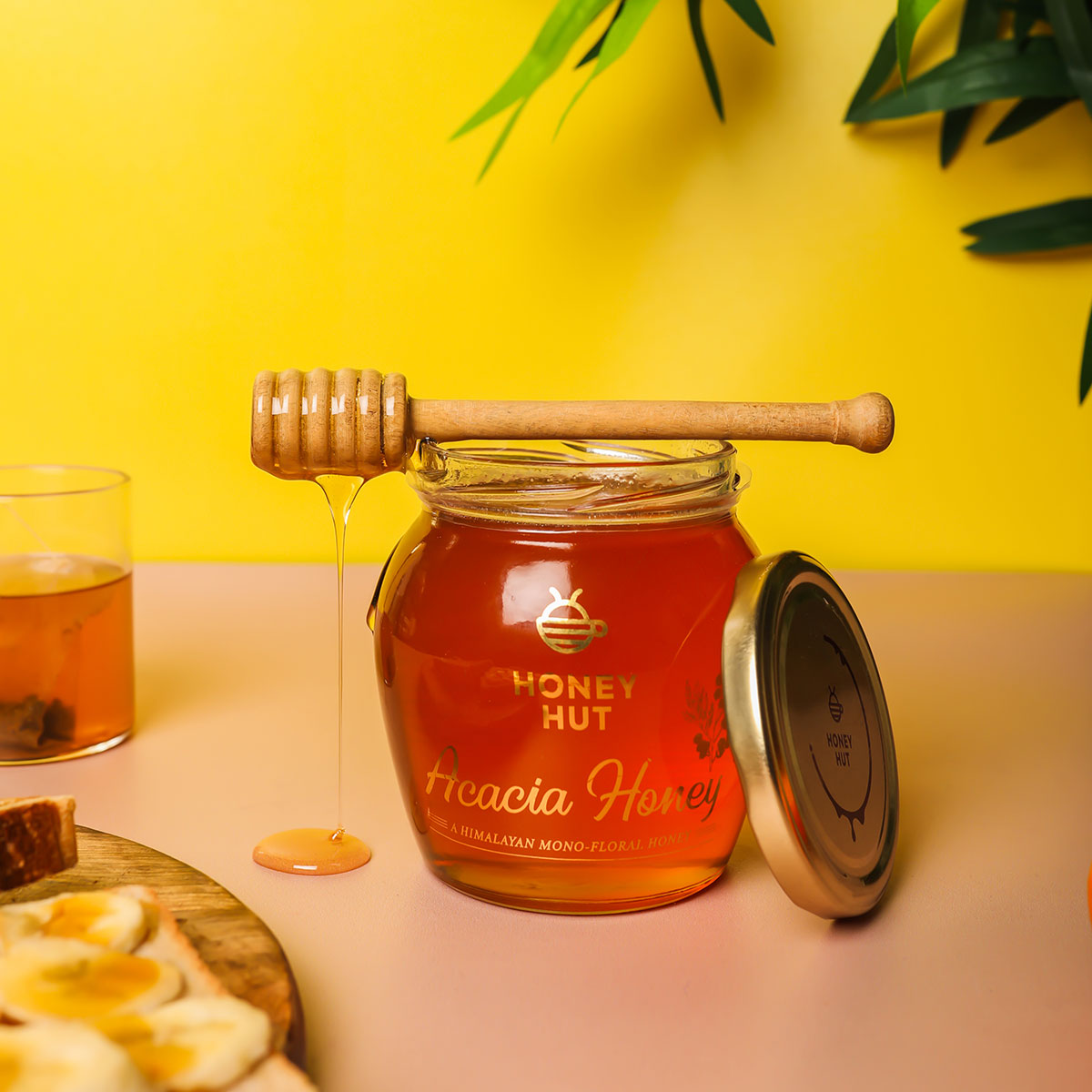Honey, nature's golden elixir, has captivated human taste buds for centuries. It is not just a sweet treat but a fascinating product that undergoes a remarkable journey from the hive to the table. Let's delve into the intriguing process behind honey production and discover the wonders hidden within each jar.
It all starts with the bees. Honeybees, buzzing around diligently, visit flowers in search of nectar, the sweet liquid produced by blossoms. They collect the nectar in their specialised honey stomachs, where enzymes begin to break down the complex sugars. Once their stomachs are full, the bees return to their hive to regurgitate the nectar into the honeycomb cells.
Inside the hive, worker bees fan their wings to evaporate excess moisture from the nectar, transforming it into honey. This natural preservation process creates a concentrated and shelf-stable product. The bees then seal the honeycomb cells with beeswax, protecting the honey from contaminants.
Beekeepers play a vital role in the honey production process. They carefully manage and maintain the hives, ensuring the health and well-being of the bees. When the honey is ready for harvest, beekeepers carefully remove the frames filled with capped honeycomb from the hive.
Back at the honey extraction facility, the process continues. Beekeepers use special tools to remove the beeswax caps from the honeycomb cells, exposing the honey. The frames are then placed in a centrifuge, which spins them at high speeds, causing the honey to be flung out of the cells. The extracted honey is collected and strained to remove any remaining impurities such as wax or bee parts.
Once the honey is strained, it is usually left to rest for a short period to allow any remaining air bubbles to rise to the top. The honey is then packaged in jars or containers, ready to grace our tables. The color, flavor, and aroma of honey vary depending on the type of flowers the bees visited, giving rise to a delightful range of honey varieties, from light and delicate to dark and robust.
Beyond its delicious taste, honey offers numerous health benefits. It is packed with antioxidants, vitamins, minerals, and enzymes, making it a natural energy booster and immune system supporter. Honey also possesses antibacterial properties and can be used as a natural remedy for sore throats and wound healing.
Next time you enjoy a dollop of honey on your morning toast or drizzle it over a bowl of yogurt, take a moment to appreciate the journey it has taken. From the bees tirelessly foraging for nectar to the dedicated beekeepers and the meticulous extraction process, honey is a testament to the wonders of nature and the harmonious partnership between humans and bees. So savor each spoonful and let the enchantment of honey transport you to the vibrant world of the hive.










